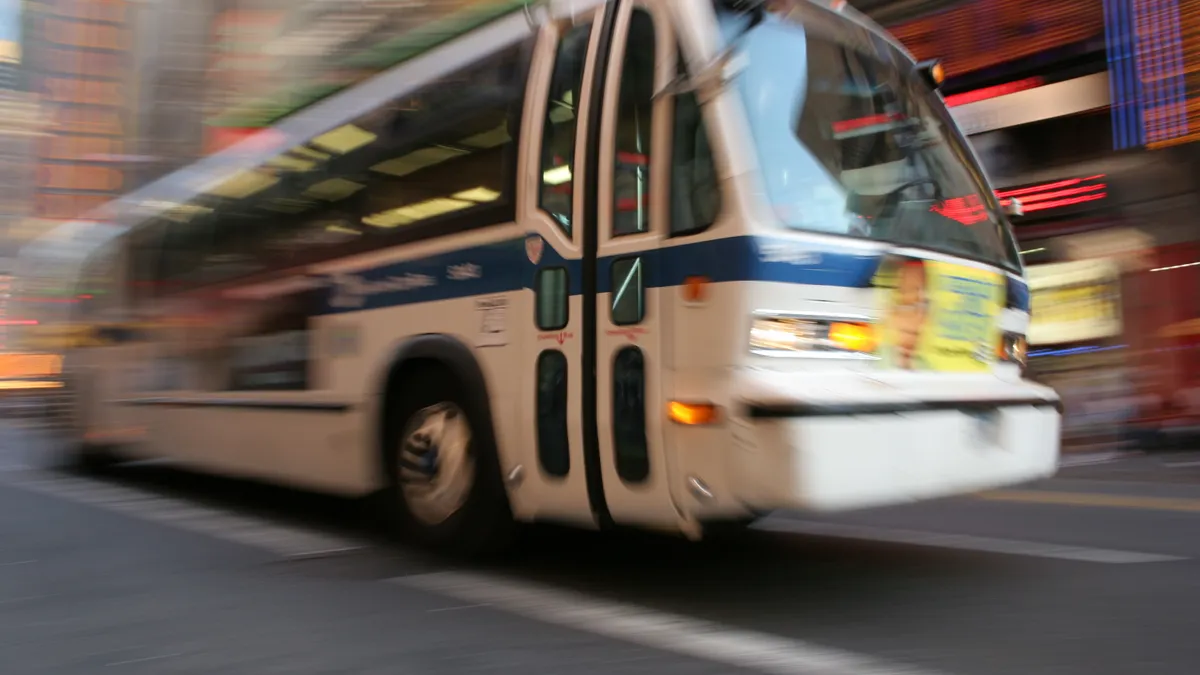The Transportation Research Board published a framework last month that city leaders can use to evaluate whether a fare-free public transit program makes sense for their community.
Many local and regional transportation authorities have experimented with fare-free public transit programs in recent years. The TRB’s Fare-Free Transit Evaluation Framework aims to help communities determine whether they should consider such a program and what to think about when it comes to implementing one.
The framework divides the process into three steps: organization, planning and evaluation.
During the first phase, city leaders must examine their current transit situation, understand the practices of similar transit agencies, and determine their challenges and opportunities, the report says.
The second step asks public officials to create a plan that lays out their agency’s goals and objectives, measures to monitor performance and the criteria they will use to evaluate their options.
The third and final phase of the framework directs city leaders to measure the effects of each option and decide what to do based on the plan they created during the second phase. Some places may want to drop all fares, while others might eliminate fares for specific routes, days, times or populations, such as people with low incomes, the report says.
When evaluating their options, officials should consider how well free fares help people get around, their effects on service quality and the transit agency's finances, and the impacts on the local economy, sustainability and traffic congestion, the study says. The TRB found that some agencies that implemented free ride programs hadn't evaluated the effects on revenue, costs or ridership.
Cities that tried free fares before the COVID-19 pandemic saw significant increases in ridership if they offered rides free to everyone but not if they targeted free fares to specific groups, the report found. For instance, Missoula, Montana, saw bus ridership jump about 70% within two years of eliminating all fares in 2015.
In addition, transit agencies can sometimes improve their finances by adopting free-fare policies. Missoula was able to secure so much grant money when it dropped fares that it improved its financial footing, the TRB found.
Shanti Devins, communications manager at Missoula’s Mountain Line transit agency, said in an interview that residents initially opposed fare-free transit when the city’s then-mayor proposed it during his reelection campaign in 2013. “People were saying, ‘If people want to take the bus, they can pay for it,’” she said.
But the program’s success ultimately swayed public opinion. Missoula voters approved a ballot measure in 2020 that brought it under the city’s operating budget via a mill levy, a type of property tax.
The TRB looked at 23 agencies with varying policies and found that, recently, free transit has become more popular. “Some of the recent momentum can be attributed, in part, to political and social justice movements that push for governments to focus on social equity,” the study says. The idea became popular during the COVID-19 pandemic — initially to minimize physical contact — and later to give people a financial break and encourage activity during the resulting economic slump, the report says.
Within the last three years, Denver, San Mateo, California, Salt Lake City, Kansas City, Missouri, Montgomery County, Maryland, Albuquerque, New Mexico and others piloted or implemented free fares for everybody or people with low incomes.
But free fares may not work well for every community. Houston’s public transportation agency, the Metropolitan Transit Authority of Harris County — or Houston METRO — considered six options for free or partially-free fares, ultimately deciding against fully-free fares. “Free fares would have fulfilled the stated goal of increasing ridership, but the costs of the alternatives with the highest ridership increases would be too high for METRO given their budget and administrative constraints,” the report says. Instead, Houston only offers free rides to people five and under, 70 and older, and jurors heading to and from the court.
Michael Brady contributed reporting to this story.










